17-th army under Tomashev. H. 2
3 schema.
By 9 50 minutes of 14 August, the commander received a report from the 7 Cavalry Division and neighbors that enemy cavalry units were seen, supported by infantry. For the first time, P. P. Yakovlev drew attention to the alarming position of his southern flank. But even paying attention, he did not draw practical conclusions - the measures of reconnaissance and guarding the flank, like the form of the march, remained unchanged.
But commander P.A. Plehve, seeing these shortcomings, all the more so as the 25 and 19 corps had just suffered serious setbacks due to the impact from the south, which was unexpected for them, ordered the commander of the 17 corps to intensify reconnaissance in the area south of Belz, Tomashev.
But the order of the commander did not lead to any practical actions of P. P. Yakovlev.
14 August, the infantry divisions held on the march. In the afternoon, the rumble of an artillery cannonade was clearly heard from Tomashev. Divisions vigorously conducted intelligence, communication with neighbors on the march was successfully maintained. The 35 Division received a message stating that the 69 Infantry Division of the 3 Army occupied Ore in 25 km south of Kristynopol. This message indicated that before the 69 division there were no major enemy forces. At the same time, this message indicated that the nearest part of the 3 Army is from the flank of the 17 Corps in two crossings - and therefore it is impossible to count on it to secure the entire flank.
The 7 Cavalry Division of 14 August had clashes of their units with the enemy. The enemy continued the attack launched by 13 on August - his dismounted parts, supported by machine-gun fire, crossed the river. Solokia. The 3 squadron as a side guard of the division held back the enemy and during march the formation marched along the river. By the 18 hours, the 7-I cavalry approached Korczow and, getting up for the night, advanced guard and reconnaissance. The officer in the car was sent to the headquarters of the corps for a report on the situation.
On August 15, having crossed the Solokia, the patrols were met by enemy fire from the edge of the forests south of the river. The forests on the front of Unuv, Belz, Kristynopol were busy with such forces that the patrols could not penetrate them.
Before M. S. Tyulin, the question arose: what is it before him - the departure of the landsturm that had departed from the border, or the protection of some new units that came from Lviv. The answer to this question could be obtained only after the battle throughout the division: it was necessary to attack the enemy's escort, to take prisoners, to penetrate the depth of the guarded band and to establish whether there was anything serious behind it or not. The head of the 7 Cavalry did not go to that - and the answer to this question determined the prospects for the operation not only of the 17 corps, but could also have an impact on the army operation.
It was so important that the only possible solution was the intervention of the commander of the 17 corps. P.P. Yakovlev was to personally arrive at the headquarters of the cavalry division, listen to the report of her superior and establish why M.S. Tyulin evades military reconnaissance. Intelligence should be carried out immediately - if necessary, replacing the commander.
On August 15, the troops of the 17 Corps received a new order, which made some changes in the direction of the divisions. Comcor proceeded from favorable information about the actions of 19 and 5 cases: The 19 body recovered after the first failure and went on the offensive, knocking down the enemy’s 3 divisional corps (6 army), and a whole regiment was taken prisoner; After a stubborn battle, the 5 corps captured the Laschoff region. P. P. Yakovlev continued to demand from his subordinates the development of the same maneuver - “a blow to the flank and rear of the enemy from Tomashev”. As before, “calming down” the divisions with respect to the southern direction (towards Lviv), the order of the corps commander focused all his attention on the western direction.
The purpose of the movement of the body was planned to exit in the area of the Foll. Poddembina, Tarnoshin, Turin: The 3 Infantry Division in the area of Gubinek - f. Poddembina and 35 division - on the 6 km ledge to the south-east in the area Tarnoshin, Turin. From this position and intended to attack the enemy, who acted against the 5-th corps. The commander reduced the brigade of the 61 Infantry Division to the open flank of the corps and sent it from Novoselka to Ulkhov.
The position of the 7 Cavalry Division and its reconnaissance on the front Zholkev, Rawa Russkaya, apparently reassured P. P. Yakovlev in the strength of the southern flank.
In 13 hours 30 minutes a new order pointed the 3 division to attack the Volya Gorodetskaya, Yarchov and 35 divisions south of Yarchov on Belzhets.
At this time, on the southern flank of the corps events unfolded, which were supposed to overturn the planning of the corps command.
M. S. Tyulin received the number 5, sent to Belz, Prusinov, with a report that Belz was occupied by an enemy infantry regiment with a battery. The commander led his regiments to Korchmin - with the aim of "becoming north for the convenience of reconnaissance and for covering the flank of the 35 Infantry Division." At the same time, Nachdiv-7 drove to his closest neighbor, the commander of the 139 Infantry Regiment of the 35 Division, stationed as a lateral vanguard of the corps at night in Korchmin, and tried to convince him to fulfill his direct duty (as part of the lateral vanguard) - to take part in counteraction to the enemy that appeared from Belz and threatened the flank of the corps. But the commander of the 139 regiment, Colonel A. E. Gutor did not believe him. He refused to comply with his proposal and went to Shchepyatin - to join up with the division. Reporting this fact to the chief of the 35 division, M. S. Tyulin continued reconnaissance.
The chief of the 35 Infantry Division also did not pay enough attention to the information about the forces of the Austrians advancing into the flank and rear of the 17 Corps, and spoke to the core of the division: The 137 regiment with two batteries in the vanguard of the division - to Turin, Zastave; the main forces, however, are the 138 and 140 regiments with three batteries on Tarnoshin. He thought about the need to send intelligence to the south, but all the cavalry, which he had at the beginning of the march (three quarters of a hundred), by this time was spent - and he could not send intelligence.
The 3 Division, following an order from the corps, advanced from the Zimno, Zherniky, Ratichev area, and launched an offensive south of the 7 16th Infantry Division of the 5 corps, successfully fought west of Laschov.
The 61 Infantry Division Brigade, carrying three batteries of the 61 Artillery Brigade and the 17 Mortar Division, carried out a march from Novoselka to Ulkhov.
What happened at the time of the Austrians?
The Austrian command has assembled a strong group of 23 infantry divisions between Sandomierz and Przemysl — against the 14,5 Russian divisions of the 4 and 5 armies. On August 10, they attacked the 4 Army (6,5 divisions), securing a double superiority. At the same time, the Austrians deployed almost equal forces against the 5 army, providing an operation against the 4. The cover group (3-I army and the Kevess group) was to pin down the Russian 3 and 8-army, ensuring freedom of action for the strike group in the north.
On the right flank of the strike force of the Austro-Hungarian armies, which attacked the Russian 4 and 5 army, was the Austrian 14 army corps. It consisted of two personnel divisions (3-th and 8-th infantry) and one secondary (land door infantry) - 44-th division.
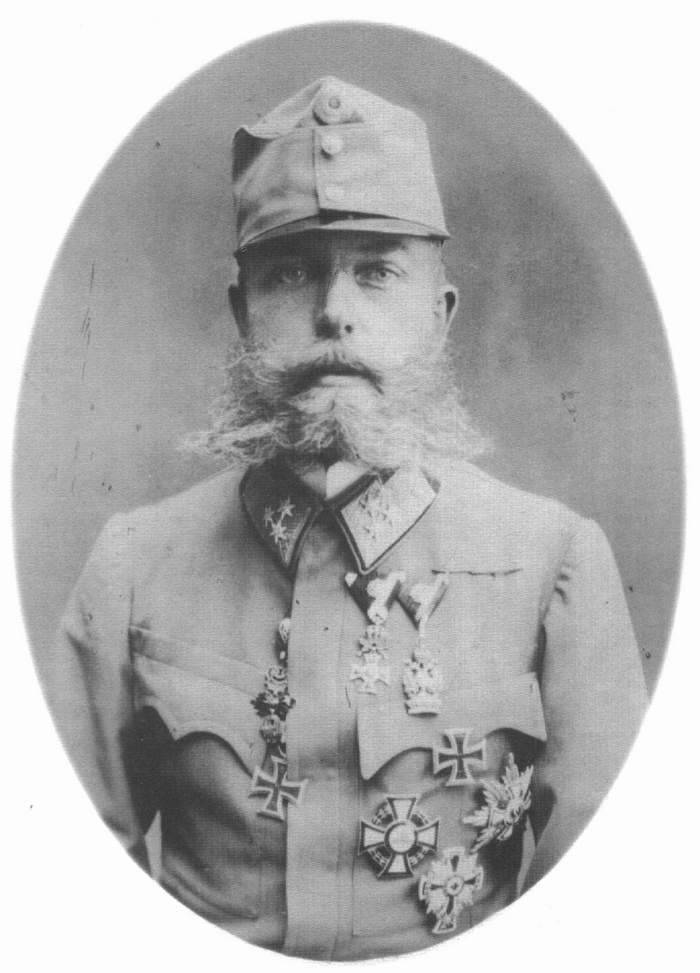
7. The commander of the 14 Army Corps, General of the Infantry Archduke Joseph Ferdinand.
Divisions consisted of: 12 - 16 battalions, 24 - 28 machine guns, 42 guns. The 14 Corps was assigned to the 2 Cavalry Division of four regiments of 6 squadrons; she had 8 machine guns and 12 guns.
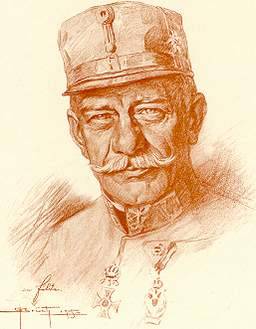
8. The commander of the 3 Infantry Division, Field Marshal-Lieutenant I. Roth.
The 14 Corps was delivered by rail to Sambir, and by August 10 it was marching to Lviv on a march order, having the 2 Cavalry Division at Parhach (15 km south of Kristynopol). The task of the 14 corps was to ensure that the movement of the Russians in the general direction of the Hrubieshov flank the strike group from the impact of the Russians from Vladimir-Volynsky. Performing this task, by the evening of the 14, the 13 Corps occupied the 3 Infantry Division, Bridges Velk, the 8 Infantry Division — Butyny, and the 44 Landward Infantry Division approached Milaw. The 2 Cavalry Division attacked Kristynopol — it was at this time that Russian intelligence noted a sharp increase in activity on the part of the Austrians.
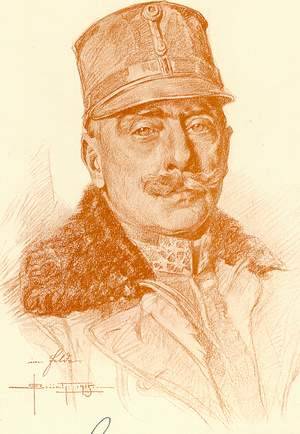
9. The chief of the 8 Infantry Division is field marshal-lieutenant I. F. von Kirbach Lauterbach.
The weakest — the 44 division — was put on the inner flank — it was to fight between the two top divisions (the 8 Infantry Division of the 14 Corps and the 19 Infantry Division of the 17 Corps, marching through Rava-Rus and Laschev). On the contrary, the best division was put on the outer flank - 3-I, and outside the flank - 2-I cavalry division. On the night of August 15, the 14 corps approached the r. Solokiya - and to the south of the river, on the forest edges, he set up guards, which stopped all attempts of the Russian patrols to penetrate south. At the same time, the 3 Infantry Division was avant-garde occupied by Belz, the 8 Infantry Division — Unnown, the 44 — I Landward Infantry Division — Verjbitsa.
But, just as the Russians were unaware of the approach of the Austrian corps, the Austrians were not aware that the Russian 17 corps was very close. It was closed to the 7 th Cavalry Division of M. S. Tyulin for their reconnaissance.
Thus, on August 15, both for the Austrian and Russian sides, the likelihood of a counter clash increased.
Could the command of the 17th corps, which did not have at its disposal aviation, in time to learn about the impending danger?
Of course. After all, by the afternoon of August 14 it should have been alarmed and noticed that its reconnaissance devices did not allow to answer the questions posed. But it did not do it - and on the night of 15, August, the reconnaissance was organized according to the old pattern, which had already shown its inconsistency. But the threat was increasing for the corps and for the entire 5 army.
If the 14-15 corps command of August closely followed what was going on, trying not only to formally accomplish what the army command demanded, it would clearly see the need to search for new forms - both in reconnaissance and in control methods.
As a result, the 17 body went towards the unknown with eyes closed - towards the oncoming battle at Tarnoshin 15 in August 1914.
In the afternoon of August 15, the oncoming battle broke out along the entire front of the 17 Corps - in the 3 foci. Moreover, the fights in these outbreaks developed autonomously.
Released in the area Gubinek 3-I division easily repelled the onslaught of the enemy. Then she was forced to withdraw - since the withdrawal of the 35 Infantry Division exposed her rear. District Gubinek - the first center tarnoshinskogo battle.
In the area Tarnoshin operated 35-I infantry division, which had to withstand a more serious blow to the enemy. She would have dealt with him, but the enemy went out to her rear, through the area where the cavalry and the 61 Infantry Division operated. She had to leave quickly, opening the rear of the 3 Infantry Division. Tarnoshin district became the second center - which gave the name to the whole battle of the 17 corps of August 15.
The Austrians suffered the most severe attack on the Vasylov, Replin section, where the cavalry and the 61 Infantry Division found themselves - which by the end of the day swiftly retreated to a whole transition to the north, revealing the rear of not only the 17 corps, but also the entire 5 army. The district Vasyl, Replin was the third center - which determined the general failure of the whole corps.
1 hearth.
Between 11 and 12 for hours, reconnaissance established the movement of large enemy forces east of Yarchov - to the north. It was the Austrian 19 Division, which sought to help the troops affected by the attack of the Russian 5 Corps. In the afternoon, she attacked the 7 Infantry Division of the 5 Corps, while the 3 Infantry Division of the Russians met with units of the 44 Landborne Infantry Division of the Austrian 14 Corps.
By the 15 watch, the 3 division turned its front to the west: the 11 regiment at the Podledov, the 12 regiment at Gubinek and the 9 regiment at f. Poddembina. The 10 regiment remained in reserve. The regiments of the 3 Infantry Division did not meet with serious resistance, but the commanders delayed their engagement in a decisive battle with the enemy - for the thunder of artillery cannonade was heard not only at the front, but also in the rear. Between 15 and 16 for hours the rumble of a fierce battle was already especially clearly heard from the deep rear of the corps - from the Replin area, Vasilylov, where the brigade of the 61 Infantry Division was to operate.
P. V. Polzikov, around 16 hours, requested the corps headquarters: “How should this be understood?” But I received no answer.
The whole day and night of the 16 August, the 3 Division spent in a busy position. The enemy did not oppress her, she did not receive orders from the corps commander. During the entire corps battle at Tarnoshin, the division remained apart from the unfolding events.
Battery goes Galician river. The great war in the images and paintings. Issue 5.
To be continued
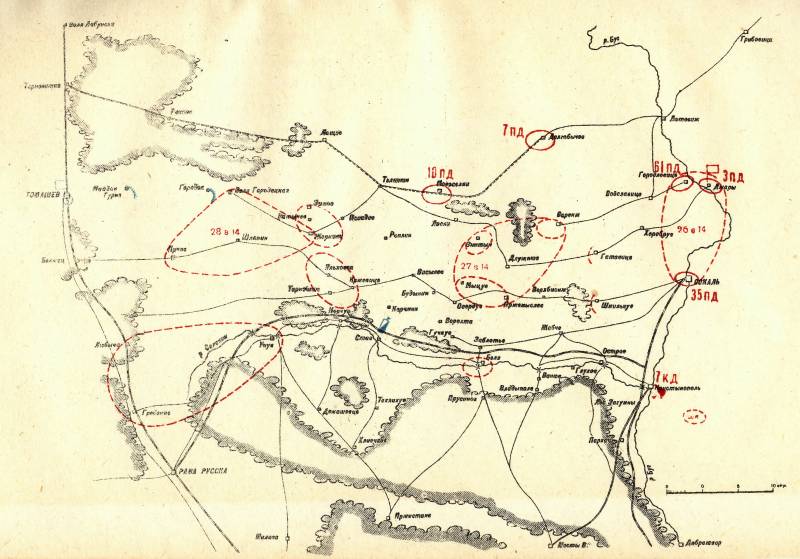
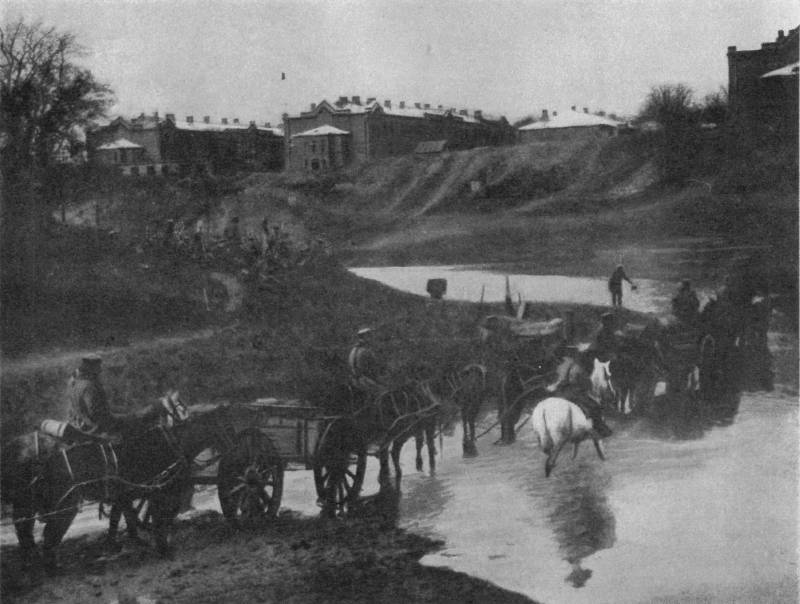
Information